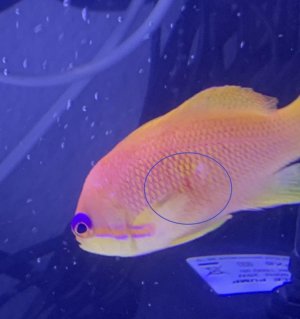reachjohnnyliu
New member
Any idea what this red spot is?
This is currently in QT w/ a basslett Anthias, Hippo Blue Tang, and Yellow Tang. No aggression that I can see in the tank. the lyretail seems to be eating just a small amount compared to the other 3.
QT is current in the middle of a General Cure & Metroplex medication cycle. I believe i'm on around day 10.
This is currently in QT w/ a basslett Anthias, Hippo Blue Tang, and Yellow Tang. No aggression that I can see in the tank. the lyretail seems to be eating just a small amount compared to the other 3.
QT is current in the middle of a General Cure & Metroplex medication cycle. I believe i'm on around day 10.

